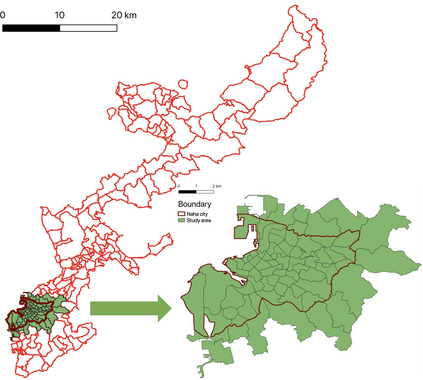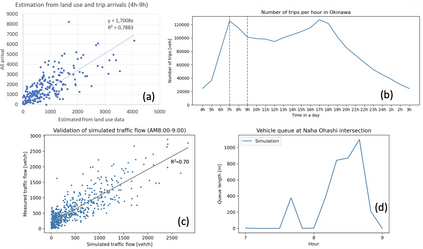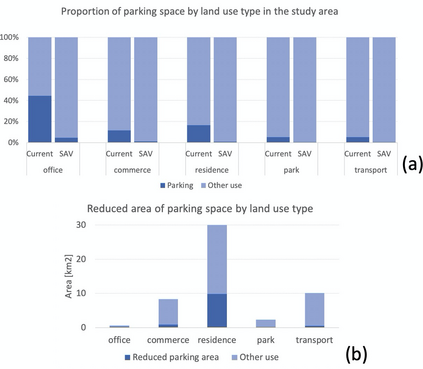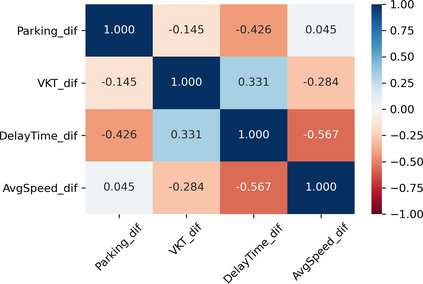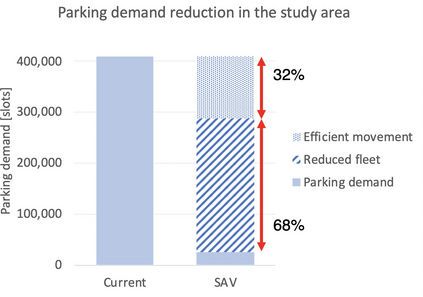Shared autonomous vehicles (SAVs) can have significant impacts on the transport system and land use by replacing private vehicles. Sharing vehicles without drivers is expected to reduce parking demand, and as a side effect, increase congestion owing to the empty fleets made by SAVs picking up travelers and relocating. Although the impact may not be uniform over a region of interest owing to the heterogeneity of travel demand distribution and network configuration, few studies have debated such impact at a local scale, such as in transportation analysis zones (TAZs). To understand the impact in relation to geographical situations, this study aims to estimate the impacts of SAVs at the local scale by simulating their operation on a developed simulator. Using the mainland of Okinawa, Japan as a case study, it was found that parking demand was reduced the most in residence-dominant zones in terms of quantity and in office-dominant zones in terms of proportion. As a side effect of replacing private vehicles with SAVs, empty fleets increase congestion, particularly at the periphery of the city. Overall, the results show the heterogeneous impacts of the SAVs at the TAZ level on both land use and traffic, thus suggesting the importance of developing appropriate strategies for urban and transport planning when considering the characteristics of the zones.
翻译:通过更换私人车辆,共有的自治车辆(SAVs)可能对交通系统和土地使用产生重大影响。在没有司机的情况下共用车辆预计会减少停车需求,并作为一种副作用,由于SAVs搭载旅行者并搬迁的空车队而增加拥堵。虽然由于旅行需求分配和网络配置的不均匀性,对感兴趣的地区的影响可能不同,但很少有研究对地方规模的这种影响进行辩论,例如在运输分析区(TAZs),为了了解与地理情况有关的影响,本研究的目的是通过在发达的模拟器上模拟SAVs的运作来估计当地规模的影响。利用日本冲绳大陆进行的一项案例研究发现,就数量和办公室占多数的地区而言,停车需求减少得最多。作为用SAVs取代私人车辆的副作用,空车队增加拥堵,特别是在城市外围地区。结果显示SAVs在TAZ级上对城市交通规划的重要程度,从而表明在考虑城市交通的恰当使用和交通战略时,开发战略的重要性。



